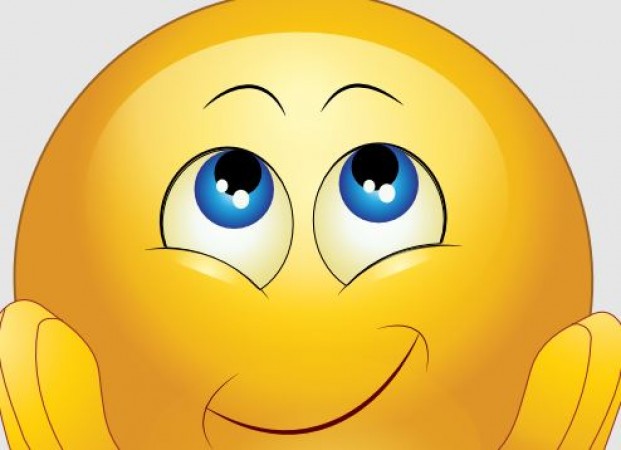
Introduction
In today's digital age, emojis have become an integral part of our communication. These small, colorful icons and symbols have revolutionized the way we express ourselves online. From simple smiley faces to intricate illustrations, emojis have evolved over time and left a significant cultural impact. This article aims to delve into the fascinating history of emojis, exploring their origins, development, and the role they play in our modern digital society.
1. The Beginnings of Emojis
In the late 1990s, emojis emerged as a response to the limitations of text-based communication. Before emojis, people relied on creative usage of punctuation marks and letters to convey emotions. However, these early emoticons were simple and limited in their expressions.
2. The Rise of Emoticons
Emoticons, the predecessors of emojis, gained popularity in the early days of the internet. These textual representations of facial expressions, such as :) for a smile or :( for a frown, allowed users to add emotional context to their messages. While emoticons were widely used, they were limited by their reliance on alphanumeric characters.
3. The Birth of Emojis
In 1999, emojis were born in Japan, thanks to Shigetaka Kurita, a designer for NTT DoCoMo, a Japanese mobile operator. Kurita created a set of 176 pixelated icons representing a wide range of emotions and objects. The word "emoji" itself combines "e" (meaning "picture") and "moji" (meaning "character" in Japanese). Initially, these emojis were available only on Japanese mobile phones.
4. Emoji Standardization
As emojis gained popularity in Japan, their usage spread globally. In 2010, the Unicode Consortium, an international organization responsible for standardizing text characters, added emojis to their character set. This standardization enabled emojis to be displayed consistently across different devices and platforms.
5. Emojis Across Platforms
One of the challenges with emojis is their visual representation. While the underlying meaning remains the same, the design and style of emojis can vary across platforms, such as iOS, Android, and social media platforms. This variation in appearance often leads to misinterpretation or confusion in communication.
6. The Cultural Impact of Emojis
Emojis have transcended language barriers and become a universal form of expression. These tiny digital symbols have the power to evoke emotions, add nuance to messages, and foster connections in the digital realm. Emojis have become a part of popular culture, influencing art, fashion, and even language.
7. Emojis as a Universal Language
One of the remarkable aspects of emojis is their ability to convey emotions and ideas across different cultures and languages. Emojis provide a common ground for communication, allowing individuals to express themselves even when they don't share a common spoken language.
8. Emojis in Marketing and Branding
Recognizing the popularity of emojis, businesses have embraced these symbols in their marketing and branding strategies. Emojis help create a more relatable and engaging brand image, allowing companies to connect with their target audience on a more personal level.
9. Emojis in Pop Culture
Emojis have permeated various aspects of popular culture. They have appeared in movies, TV shows, and even music videos. Emojis have become a visual shorthand, representing emotions and concepts that resonate with audiences worldwide.
10. Emojis and Personal Expression
Emojis offer a range of options for personal expression. With thousands of emojis available, individuals can tailor their messages to reflect their emotions, interests, and experiences. Emojis empower users to add depth and personality to their digital conversations.
11. Emojis and Emotional Communication
Emojis play a crucial role in emotional communication. They bridge the gap between text-based conversations and in-person interactions by infusing digital messages with sentiment and tone. Emojis help convey sarcasm, humor, empathy, and a wide range of emotions that might otherwise be lost in translation.
12. Controversies and Challenges
While emojis have become an integral part of our digital lives, they are not without controversies and challenges. Emojis have faced criticism for their potential to oversimplify complex issues, reinforce stereotypes, or exclude certain groups. The interpretation of emojis can also vary, leading to misunderstandings or miscommunications.
13. Future of Emojis
As technology advances, emojis will continue to evolve and adapt to the changing digital landscape. With the increasing popularity of augmented reality and virtual reality, we may see the integration of emojis into these immersive experiences. Emojis could also become more inclusive, representing a broader range of identities and experiences.
14. Conclusion
The history of emojis is a testament to the power of visual communication in the digital age. From their humble beginnings as emoticons to becoming a global language of expression, emojis have transformed the way we communicate online. As they continue to evolve, emojis will remain a vibrant and integral part of our digital interactions, enriching our conversations and transcending cultural boundaries.
Trailblazing Discoveries: Unveiling the Remarkable Contributions of Indian Scientists
The Remarkable Journey: Evolution of Indian Computer Programming